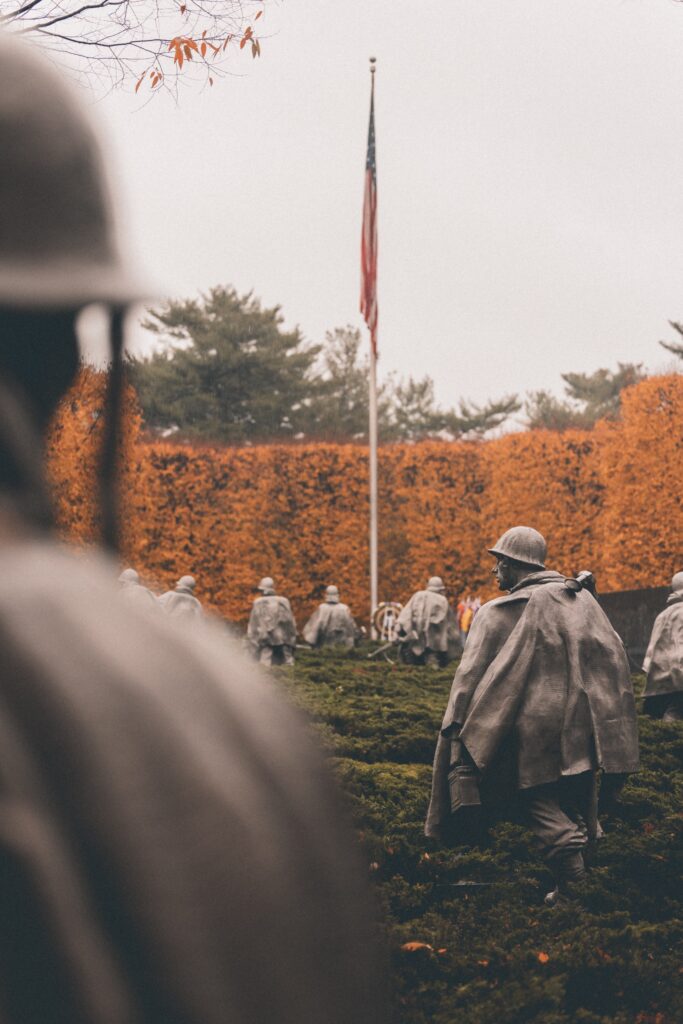By: Inyoung Park
Why is America involved in the Peace Treaty between South and North Korea? On June 25, 1950, the Korean War broke out when approximately 135,000 North Koreans, backed with support from China and the Soviet Union, stormed past the 38th parallel line that was dividing the Democratic South and the Communist-controlled North Korea.[1] At the time, President Harry Truman commanded “police action” by assembling international allies to help combat troops or medical support units.[2] On June 27, 1953, the armistice merely paused the war.[3] The signatories included the United States as well as North Korea and the United Nations.[4] Since then, South Korea has been backed by the United States, with nearly 30,000 U.S. troops present in South Korea.[5]
The United States has been involved with South Korea and the matters of North Korea since the beginning of the Korean War. Therefore, H.R. 3466, the Peace on the Korean Peninsula Act, is not the United States’ first involvement with the Koreas.[6]
The Act is divided into four sections: Section 1 includes the short title of the Act; Section 2 talks about the background information related to the need for the Act; Section 3 states humanitarian considerations for visiting North Korea and; Section 4 is a formal declaration that calls for an official end of the Korean War.[7] The Act urges for the “compelling humanitarian considerations” that will allow Korean-Americans to meet their relatives in North Korea by lifting travel restrictions between North Korean and U.S. nationals, formally ending the war.[8] However, are these ideals and languages sugarcoating the tragic reality that could result from the enactment of the Act?
The Act does not include any specific language on procedures to denuclearize North Korea. North Korea has continuously researched and tested its nuclear missiles.[9] On September 3, 2017, North Korea conducted its largest nuclear test with an explosive power of 100 to 370 kilotons. 100 kilotons have six times more power than the bomb dropped on Hiroshima in 1945.[10] North Korea has promised to suspend its nuclear testing numerous times, but the promise has routinely been broken.[11]
If the Act is passed, it can be used against the maintenance of the U.S. Army in South Korea. As the agreement formally declares the end of the war, the United States does not have any purpose in maintaining its troops in South Korea. However, if U.S. troops are removed from South Korea, South Korea could find itself in a similar situation to what happened in Afghanistan. After the withdrawal of the U.S. forces in Afghanistan, the government collapsed, and the Taliban took control of Kabul.[12] It is highly unlikely that there will be a sudden invasion of South Korea by North Korea, however. Yet, the withdrawal will weaken the security basis of South Korea and Northeast Asia and shift the foreign policy of the United States as maintenance of the troops in South Korea meant more than a mere alliance—it represented “the Nixon Doctrine, the end of the Cold War, and the global war on terrorism.”[13] Thus, U.S. troops should not be removed from South Korea without a concrete plan against denuclearization in North Korea. Otherwise, the Act will only help North Korea—and China backing North Korea—in spreading its ideology and power over South Korea and other countries without the United States’ involvement.
However, even if the Act includes specific language to enforce the complete denuclearization in the North, it is not likely to be kept. If the Act does bring an end to the war, talks of reunification might spark between North and South Korea, especially under South Korea’s current president, President Moon.
There are confrontations between progressives and conservatives in Korean politics. President Moon is of progressive power that supports the sunshine policy towards North Korea.[14] Unlike the conservative government that approached North Korea with military-based deterrence that prioritized denuclearization of North Korea and ensured that South Korea would only respond in kindness if North Korea does the same, the sunshine policy focuses on collaboration and cooperation with North Korea.[15] Therefore, based on this ideology, President Moon and other potential progressive governments are likely to propel the movement for reunification. However, in 2018, when President Moon and North Korean leader Kim Jong-un vowed peace in the Korean peninsula under the Panmunjom Declaration, and North Korea pledged a “complete denuclearization,” it was never kept.[16] Therefore, even if the Act included the “complete denuclearization” element and the North Korean leader signs it, there is still no guarantee of its promise being kept. The Act will merely be used as a force to push for one ideology after another, such as requesting the U.S. military to be removed from South Korea.
With vague and uncertain language in the Peace on the Korean Peninsula Act, which presents no viable solution toward the denuclearization of North Korea and its history of breaking promises, the Act has no positive benefit, except to North Korea and China. If the Act is enacted and provides a justification for the withdrawal of the U.S. army from South Korea, it will deteriorate the democratic value and security it stood for in Asia. Legislatures should not be signing the bill based on sugarcoated language that sounds too good to be true.
[1] Brad Lendon, Didn’t the Korean War End in 1953? The Short Answer Is No, CNN World (Dec. 20, 2021), https://www.cnn.com/2021/12/30/asia/korean-war-armistice-peace-explained-intl-hnk-ml/index.html.
[2] Id.
[3] Josh Smith, Explainer: S.Korea Sees Peace Declaration As Key to Restarting N.Korea Talks, Reuters (Oct. 27, 2021), https://www.reuters.com/world/asia-pacific/skorea-sees-peace-declaration-key-restarting-nkorea-talks-2021-10-27/.
[4] Id.
[5] William Gallo, How the Afghanistan Withdrawal Looks from South Korea, America’s Other ‘Forever War’, VOA (Aug. 20, 2021), https://www.voanews.com/a/usa_how-afghanistan-withdrawal-looks-south-korea-americas-other-forever-war/6209777.html.
[6] The Peace on the Korean Peninsula Act was introduced in the House by Representative Sherman on May 20, 2021. At this time, it has only been introduced in the House. Id.
[7] Peace on the Korean Peninsula Act, H.R. 3446, 117th Cong. (202122).
[8] Id.
[9] Reality Check, North Korea: What We Know About Its Missile And Nuclear Programm, BBC News (Jan. 28, 2021), https://www.bbc.com/news/world-asia-41174689.
[10] Choe Sang-Hun, North Korea’s Arsenal Has Grown Rapidly. Here’s What’s In It, N.Y. Times (Oct. 18, 2021), https://www.nytimes.com/article/north-korea-arsenal-nukes.html.
[11] Reality Check, supra note 9.
[12] Clint Work, Seoul Isn’t Kabul, Foreign Pol’y (Aug. 18, 2021), https://foreignpolicy.com/2021/08/18/south-korea-usa-troops-withdraw-kim-jong-un-moon-seoul-kabul/.
[13] Id.
[14] Chan-Min Roh, Four Years of Sunshine: Examining South Korea’s Policy of Reconciliation Toward North Korea Under the Moon Administration, Synergy (Mar. 30, 2021), https://utsynergyjournal.org/2021/03/30/four-years-of-sunshine-examining-south-koreas-policy-of-reconciliation-toward-north-korea-under-the-moon-administration/.
[15] Id.
[16] Ahn Sung-mi, Three Years After Historic Panmunjom Declaration, Two Koreas Remain Deadlocked, The Korea Herald (Apr. 26, 2021), http://www.koreaherald.com/view.php?ud=20210426000816.


